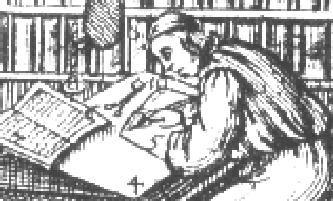 |
Text Encoding Initiative |
9. Editorial Interventions |
The process of encoding an electronic text has much in common with the process of editing a manuscript or other text for printed publication. In both cases a conscientious editor may wish to record both the original state of the source and any editorial correction or other change made in it. The elements discussed in this and the next section provide some facilities for meeting these needs.
The following pair of elements may be used to mark correction, that is editorial changes introduced where the editor believes the original to be erroneous:
- <corr>
- contains the correct form of a passage apparently erroneous in
the copy text. Attributes include:
- sic
- gives the original form of the apparent error in the copy text.
- resp
- signifies the editor or transcriber responsible for suggesting the correction held as the content of the <corr> element.
- cert
- signifies the degree of certainty ascribed to the correction held as the content of the <corr> element.
- <sic>
- contains text reproduced although apparently incorrect or
inaccurate. Attributes include:
- corr
- gives a correction for the apparent error in the copy text.
- resp
- signifies the editor or transcriber responsible for suggesting the correction.
- cert
- signifies the degree of certainty ascribed to the correction.
The following pair of elements may be used to mark normalization, that is editorial changes introduced for the sake of consistency or modernization of a text:
- <orig>
- contains the original form of a reading, for which a
regularized form is given in an attribute value. Attributes include:
- reg
- gives a regularized (normalized) form of the text.
- resp
- identifies the individual responsible for the regularization of the word or phrase.
- <reg>
- contains a reading which has been regularized or normalized in
some sense. Attributes include:
- orig
- gives the unregularized form of the text as found in the source copy.
- resp
- identifies the individual responsible for the regularization of the word or phrase.
... for his nose was as sharp as a pen and a' table of green feeldsis taken by Gifford as involving (1) the erroneous substitution of table for babbled, and (2) the non-standard spellings a' and feelds for he and fields. Gifford's conjecture might be encoded thus:
... for his nose was as sharp as a pen and <reg orig="a'">he</reg> <corr sic="table" ed="Gifford">babbl'd</corr> of green <reg orig="feelds">fields</reg>
Up: Contents Previous: 8. Cross References and Links Next: 10. Omissions, Deletions, and Additions
Date: (revised October 2004) Author: Lou Burnard (revised SPQR).
Copyright TEI 1995